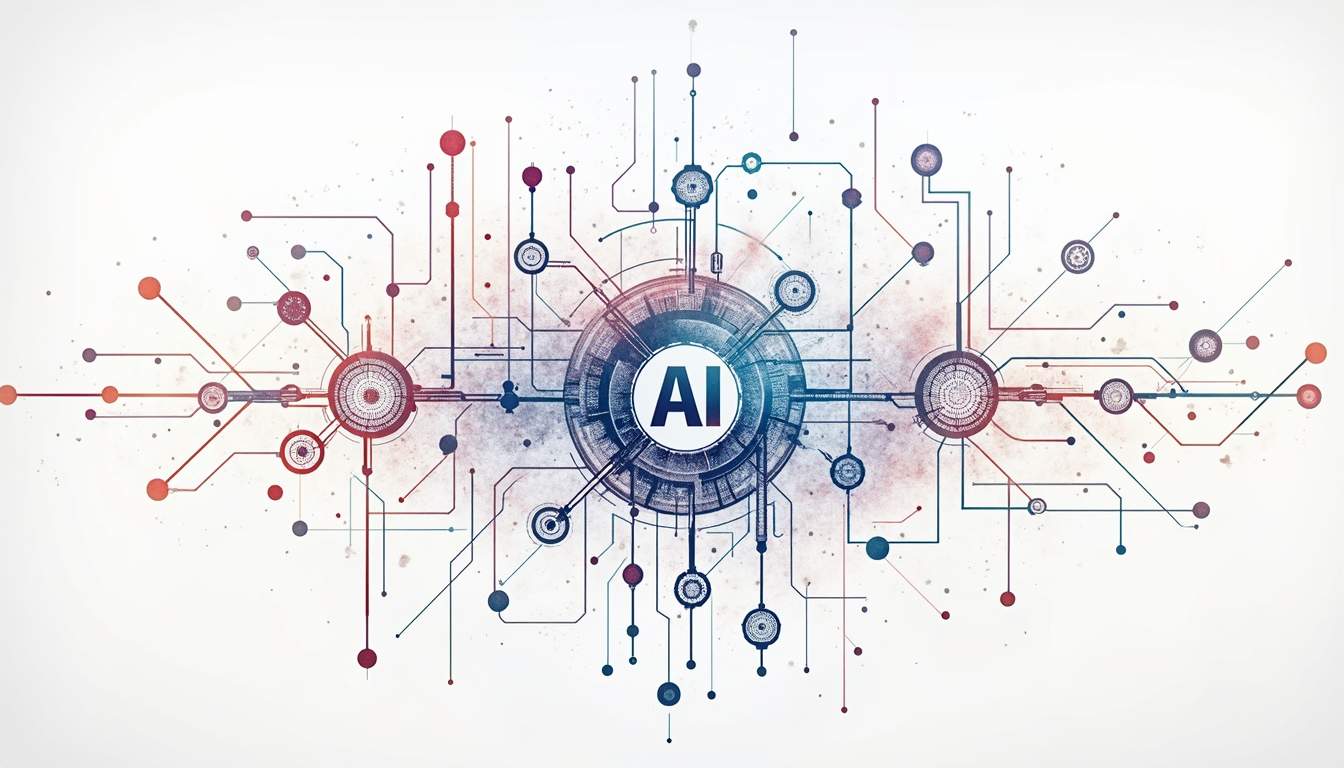Understanding Agent Architecture in Artificial Intelligence: A Comprehensive Guide
In the rapidly evolving field of artificial intelligence (AI), the concept of agent architecture plays a pivotal role in shaping how intelligent systems operate. This article delves into the intricacies of agent architecture, exploring its definitions, types, components, and real-world applications. By the end, readers will gain a comprehensive understanding of how agents function and their significance in AI.
What is Agent Architecture?
Agent architecture refers to the underlying structure that defines how an intelligent agent perceives its environment, makes decisions, and acts upon those decisions. An agent can be anything from a simple software program to a complex robotic system. The architecture determines how these agents interact with the world and how they process information.
At its core, agent architecture is about creating systems that can autonomously perform tasks, adapt to changing environments, and learn from their experiences. This involves a combination of hardware and software components that work together to achieve specific goals.
Key Characteristics of Intelligent Agents
Intelligent agents typically possess several key characteristics that enable them to function effectively. These include autonomy, adaptability, social ability, and reactivity. Autonomy allows agents to operate without human intervention, while adaptability enables them to adjust their behavior based on new information or changes in their environment.
Social ability refers to an agent's capacity to interact with other agents or humans, facilitating communication and collaboration. Lastly, reactivity ensures that agents can respond promptly to stimuli in their surroundings, allowing them to navigate dynamic environments efficiently.
Types of Agent Architectures
Agent architectures can be broadly categorized into two main types: reactive architectures and deliberative architectures. Each type has its strengths and weaknesses, making them suitable for different applications.
Reactive Architectures
Reactive architectures are designed for quick responses to environmental stimuli. These agents operate primarily through a series of pre-defined rules or simple reflexes. The primary advantage of reactive architectures is their speed and efficiency, making them ideal for tasks that require immediate action, such as in robotics or gaming.
However, the simplicity of reactive architectures can also be a drawback. They often lack the ability to plan for the future or consider long-term consequences, which can limit their effectiveness in complex scenarios where strategic thinking is required.
Deliberative Architectures
In contrast, deliberative architectures emphasize reasoning and planning. These agents utilize knowledge representation and reasoning techniques to make informed decisions based on their goals and the state of their environment. Deliberative agents can analyze situations, predict outcomes, and choose actions that align with their objectives.
While deliberative architectures offer a higher level of sophistication, they also come with increased computational demands. The need for extensive processing can lead to slower response times, making them less suitable for real-time applications.
Components of Agent Architecture
The architecture of an intelligent agent comprises several essential components that work together to facilitate its operation. Understanding these components is crucial for grasping how agents function effectively.
Perception
Perception is the process through which an agent gathers information about its environment. This can involve sensors, cameras, microphones, or other input devices that capture data. The quality and accuracy of perception directly impact an agent's ability to make informed decisions.
In many cases, perception involves not just raw data collection but also the interpretation of that data. For instance, an autonomous vehicle must not only detect obstacles but also understand their distance, speed, and potential trajectory to navigate safely.
Reasoning and Decision-Making
Once an agent has perceived its environment, it must process that information to make decisions. This involves reasoning, which can take various forms, including rule-based systems, decision trees, or more complex algorithms like machine learning models.
The decision-making process is critical, as it determines the agent's actions. Agents must weigh potential outcomes, consider their goals, and choose the most appropriate course of action. This component is where the distinction between reactive and deliberative architectures becomes apparent.
Action
Action refers to the mechanisms through which an agent interacts with its environment. This can involve physical movements, such as a robot navigating a space, or digital actions, such as a software agent sending messages or executing commands. The effectiveness of an agent's actions is contingent upon its perception and decision-making capabilities.
Real-World Applications of Agent Architecture
Agent architecture is not merely a theoretical concept; it has practical applications across various industries. From autonomous vehicles to virtual personal assistants, the influence of agent architecture is pervasive.
Autonomous Vehicles
One of the most prominent applications of agent architecture is in autonomous vehicles. These vehicles rely on a combination of perception, reasoning, and action to navigate complex environments safely. The architecture must account for real-time data from sensors, interpret that data to identify obstacles and routes, and execute driving maneuvers accordingly.
As technology advances, the architectures used in autonomous vehicles are becoming increasingly sophisticated, incorporating machine learning algorithms that allow these systems to learn from experience and improve over time.
Virtual Personal Assistants
Virtual personal assistants, such as Siri, Alexa, and Google Assistant, utilize agent architecture to understand and respond to user queries. These agents rely on natural language processing (NLP) to interpret spoken commands, reason about the context of those commands, and take appropriate actions, such as setting reminders or providing information.
The effectiveness of these assistants hinges on their ability to perceive user intent accurately and respond in a way that feels natural and helpful. As AI continues to evolve, so too will the capabilities of these virtual agents.
Smart Home Systems
Smart home systems exemplify another application of agent architecture. These systems integrate various devices, such as thermostats, lights, and security cameras, to create a cohesive and automated living environment. The architecture allows these devices to communicate with each other, perceive user preferences, and make decisions that enhance comfort and security.
For instance, a smart thermostat can learn a homeowner's schedule and adjust the temperature accordingly, optimizing energy usage while maintaining comfort. This level of adaptability is a direct result of the underlying agent architecture.
Challenges in Agent Architecture
Despite the advancements in agent architecture, several challenges remain. Addressing these challenges is essential for the continued development of intelligent agents that can operate effectively in real-world scenarios.
Scalability
As the complexity of environments increases, so does the need for scalable agent architectures. Agents must be able to handle a growing amount of data and interactions without sacrificing performance. This is particularly relevant in applications like smart cities, where numerous devices and systems must work together seamlessly.
Designing architectures that can scale efficiently while maintaining responsiveness is a significant challenge that researchers and developers are actively working to overcome.
Robustness and Reliability
Robustness refers to an agent's ability to function correctly in the face of unexpected situations or errors. Reliability is closely related, as it pertains to the consistency of an agent's performance over time. Ensuring that agents can handle uncertainties, such as sensor inaccuracies or changes in environmental conditions, is crucial for their successful deployment.
Developing robust and reliable agent architectures requires rigorous testing and validation, as well as the incorporation of fail-safes and contingency plans to handle potential failures.
Ethical Considerations
As agents become more autonomous and capable, ethical considerations surrounding their use become increasingly important. Questions regarding accountability, transparency, and bias in decision-making must be addressed to ensure that intelligent agents operate in ways that align with societal values and norms.
Developers and researchers must engage in thoughtful discussions about the ethical implications of agent architecture, striving to create systems that are not only effective but also responsible and fair.
The Future of Agent Architecture
The future of agent architecture in artificial intelligence is promising, with ongoing research and development poised to drive innovation in this field. As technology continues to advance, several trends are likely to shape the evolution of agent architectures.
Integration of Machine Learning
Machine learning is becoming increasingly integrated into agent architectures, enabling agents to learn from their experiences and improve their performance over time. This integration allows for more adaptive and intelligent systems that can better navigate complex environments and make informed decisions.
As machine learning techniques evolve, they will likely enhance the capabilities of agents, allowing them to handle more complex tasks and operate in more dynamic settings.
Human-Agent Collaboration
The future will likely see a greater emphasis on human-agent collaboration, where agents work alongside humans to achieve common goals. This collaboration can enhance productivity and efficiency in various domains, from healthcare to manufacturing.
Designing architectures that facilitate effective communication and collaboration between humans and agents will be crucial in realizing the full potential of intelligent systems.
Focus on Explainability
As agents become more complex and autonomous, the need for explainability in their decision-making processes becomes paramount. Users must understand how agents arrive at their conclusions to trust and effectively interact with these systems.
Future agent architectures will likely incorporate mechanisms for explainability, allowing users to gain insights into the reasoning behind an agent's actions. This transparency will foster trust and facilitate smoother human-agent interactions.
Conclusion
Agent architecture is a foundational aspect of artificial intelligence that underpins the functionality of intelligent agents across various applications. By understanding the different types of architectures, their components, and the challenges they face, one can appreciate the complexity and potential of these systems.
As technology continues to advance, the future of agent architecture holds exciting possibilities, from enhanced machine learning integration to improved human-agent collaboration. By addressing current challenges and ethical considerations, researchers and developers can pave the way for intelligent agents that not only perform effectively but also align with societal values.
In this ever-evolving landscape, staying informed about the developments in agent architecture will be crucial for anyone interested in the future of artificial intelligence. Whether in academia, industry, or everyday life, the impact of intelligent agents is set to grow, shaping the world in ways we are only beginning to understand.






